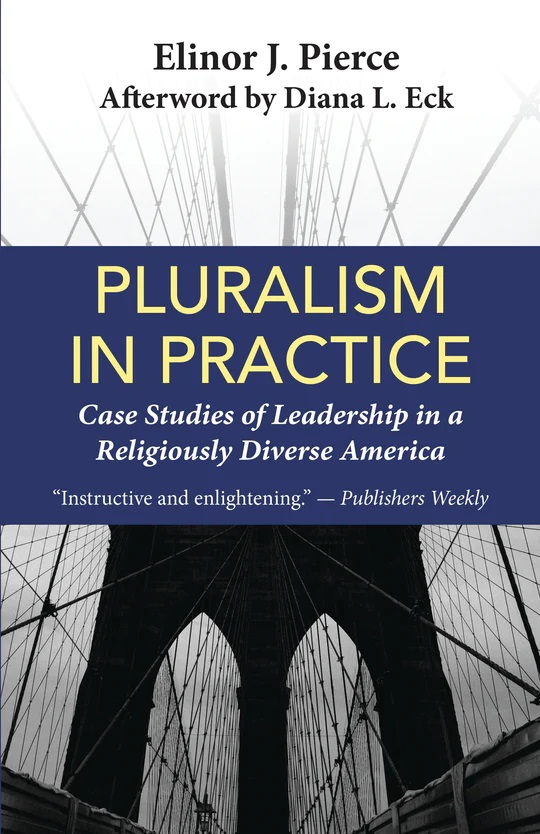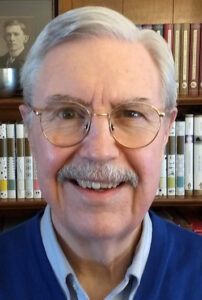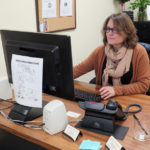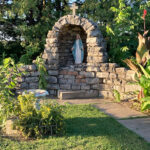
This is the cover to “Pluralism in Practice: Case Studies of Leadership in a Religiously Diverse America,” edited and written by Elinor J. Pierce. It is reviewed by Timothy Walch.
By Tim Walch
Book Review
“Pluralism in Practice: Case Studies of Leadership in a Religiously Diverse America,” edited and written by Elinor J. Pierce. Afterword by Diana L. Eck. Orbis Books, 244 pages, $34.
The first official motto of the United States of America was “one out of many” — a celebration of both unity and diversity. That we are one people is without question but it’s just as true that we cherish our differences.

Finding a balance between common bonds and unique qualities is the focus of the Pluralism Project at Harvard University. One by-product of the project is practical advice on living together in a culturally and religiously diverse society.
So, what do we mean by a pluralistic society? “Pluralism is not just tolerance,“ stresses project director Diana L. Eck, “but the active seeking of understanding across lines of difference. … It means holding our deepest differences, even our religious differences, not in isolation, but in relationship to one another.”
That’s no small task and Eck makes it clear that “the language of pluralism is that of dialogue and encounter, give and take, criticism and self-criticism. Dialogue means both speaking and listening, and that process reveals both common understandings and real differences. Dialogue does not mean everyone at the ‘table’ will agree with one another. Pluralism involves the commitment to being at the table —with one’s commitments.”
“Pluralism in Practice” presents a series of “decision-based” case studies that ask us to consider and decide how to resolve specific conflicts. Each case introduces a problem, place and person and lays out a decision to be made to resolve the problem. At the end of each case, we are asked to consider additional questions and encouraged to reflect on the dynamics of resolution.
The book includes 12 case studies gathered into six chapters. The first chapter focuses on the display of religion in public places. How can we balance our desire to display religious symbols such as crèches or Christian crosses but still allow for the rights of non-Christians and non-believers?
The second chapter takes up the challenge of accommodating religious practices that are outside the Judeo-Christian norm. Incorporating Hindu traditions into a public presentation of religious faith was a real dilemma for one American city. So also, how does a Christian community accommodate the public broadcast of the Muslim call for prayer?
The third chapter concentrates on the interfaith frictions that are almost inevitable in a nation that prohibits the formal recognition of religion. Here the cases studies focus on arguments over Israel and Palestine and the matter of proselytization of specific religious faiths.
The last three chapters take up issues that are specific to distinct religious traditions. Where can Muslims locate their mosques? How do we safely balance interfaith events in response to persistent antisemitic violence? How do Hindus and Buddhists navigate the challenges of persistent hostility to their presence in the public square?
The process of compiling this book took more than 20 years and is an ongoing element of the project. Recent research has led to a series of observations on how these issues have changed. Just as the nation has evolved, so have the ways we resolve our religious conflicts.
“This volume provides cautionary tales,” adds Pierce at the end of her introduction, “but also offers powerful examples of response and repair. Each case highlights one or more critical, constructive, and creative responses – of pluralism in practice — as tools for education, and perhaps, as a source for inspiration.”
And that is what we can hope for from this book — inspiration. Just as that first motto says — we are one out of many. Our challenge is to find the balance between the one and the many. Perhaps we should look for guidance in a more recent motto — “In God We Trust.”
(Timothy Walch is a parishioner at St. Thomas More Parish in Coralville and a member of The Catholic Messenger’s Board of Directions. He regularly reviews books for The Messenger and other publications and is the author of many books, including “Irish Iowa.”)











